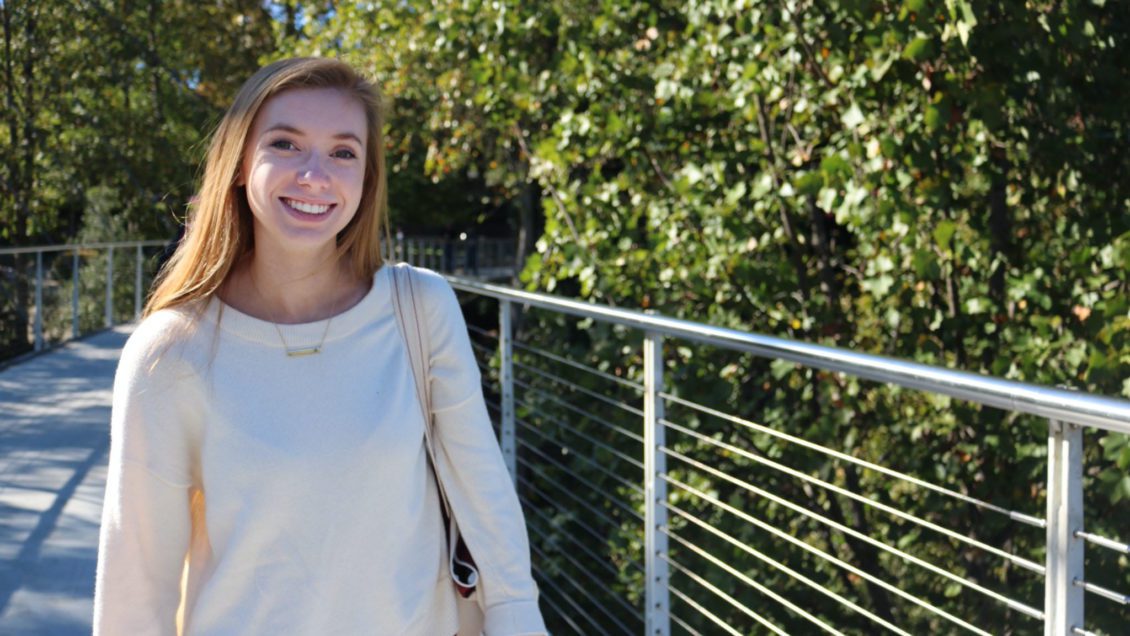
CLEMSON, South Carolina – Should colleges and universities resume in-person classes for the Fall 2020 semester? This is a question that a Clemson COVID Challenge team of Clemson undergraduates began to explore back in late May 2020.
The team was mentored by Sharon Bewick, an assistant professor in the College of Science’s department of biological sciences, and featured undergraduate students Erika Ludden, who is majoring in microbiology, and Joseph Matthews, who is majoring in mathematical sciences.
Ludden and Matthews quickly realized that the decision to resume in-person classes should be unique to each school, depending on where the school was located and the composition of its student body. Thus, the team came up with the idea of making an online tool that could estimate the individualized risks of returning to campus at each major college and university across the United States.
After the conclusion of the COVID Challenge, Ludden continued to work with Bewick and paired up with Suzanne Robertson of the department of mathematics and applied mathematics at Virginia Commonwealth University and Jeffrey Demers of the department of biology at the University of Maryland at College Park in order to finish the project. Ultimately, this collaboration led to the “COVID-19 Consequences of College Continuity Calculator,” an online tool that can help students, faculty and staff estimate their own personalized risks of returning to in-person classes in Fall 2020. The tool is freely available at the following link: https://bewicklab.shinyapps.io/covid-1/

The COVID-19 Consequences of College Continuity Calculator has an easy-to-use graphical user interface (GUI) that allows users to select their school of interest, the school’s opening date, a range of different disease parameters and, finally, information about the school’s planned testing and quarantining strategies. The tool then predicts the probability that at least one undergraduate student will return carrying the COVID-19 virus. It also predicts the expected number of students who will return with active infections, as well as the number of students who will return still in the incubation phase of a COVID-19 infection.
The distinction between active and incubating COVID-19 infections is important, because current testing strategies are expected to miss students still in the incubation phase. The tool also predicts where the majority of students carrying COVID-19 will be returning from. For example, are most cases coming from in-state students or from out-of-state students?
Finally, the tool predicts the number of COVID-19 cases that the planned testing and quarantining strategies will miss. These students could be allowed back into the university community, where they will continue to spread the disease. More information about the tool can be found in this article.
“Our tool was designed to combine state-level demographic data from each college or university with state-level predictions from Institute for Health Metrics and Evaluation (IHME) models to determine COVID-19 infection rates in returning students,” Ludden said. “This allowed us to generate predictions unique to the geographical representativeness of 1,440 different schools’ student bodies.”

Clearly, difficult choices are being made across the country as schools decide whether or not to resume in-person classes, attempting to balance the importance of student education, financial viability, equity and access, public health and student and staff safety in the face of unprecedented challenges. Ultimately, final decisions on opening strategies will vary based on a range of factors that determine the risks of in-person classes, as well as the costs and benefits of remote learning.
Because the risks of COVID-19 are not “one-size-fits-all,” the COVID-19 Consequences of College Continuity Calculator provides tailored estimates of the number of cases of COVID-19 expected among returning undergraduate students at individual schools based on the incoming student body, the school location and the school capacity for mitigation through testing and quarantine.
“Our predictive tool can provide an understanding of the potential risks unique to individual universities based on student body size, geographic location, and school-opening strategy,” Bewick said. “Our hope is that this tool will provide a missing informational component that can be used to factor into the informed decision-making of administrators, faculty and students in returning to campus.”
Get in touch and we will connect you with the author or another expert.
Or email us at news@clemson.edu

